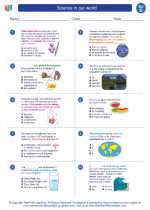Spinal Cord
The spinal cord is a crucial part of the central nervous system and is responsible for transmitting messages between the brain and the rest of the body. It is a long, thin, tubular bundle of nervous tissue and support cells that extends from the base of the brain down through the vertebral canal.
Anatomy of the Spinal Cord
The spinal cord is made up of nerve cells and bundles of nerve fibers. It is divided into different sections, including the cervical, thoracic, lumbar, and sacral regions, each of which is associated with specific functions and nerve connections.
Functions of the Spinal Cord
The spinal cord plays a crucial role in transmitting sensory information from the body to the brain and motor commands from the brain to the body. It also coordinates reflexes, such as the knee-jerk reflex, which are rapid, involuntary responses to stimuli.
Protection of the Spinal Cord
The spinal cord is protected by the vertebrae of the spine and is surrounded by cerebrospinal fluid, which acts as a cushion. The meninges, a protective membrane, also help shield the spinal cord from injury and infection.
Study Guide
- What is the spinal cord and its function?
- Describe the anatomy of the spinal cord.
- Explain the role of the spinal cord in transmitting sensory information and motor commands.
- How is the spinal cord protected from injury?
- Discuss the coordination of reflexes by the spinal cord.
Understanding the spinal cord is essential for comprehending the functioning of the nervous system and its role in controlling bodily activities and responses. It is also crucial for understanding conditions and injuries related to the spinal cord.
.◂Science Worksheets and Study Guides Fourth Grade. Science in our world

 Worksheet/Answer key
Worksheet/Answer key
 Worksheet/Answer key
Worksheet/Answer key
 Worksheet/Answer key
Worksheet/Answer key
 Vocabulary/Answer key
Vocabulary/Answer key
